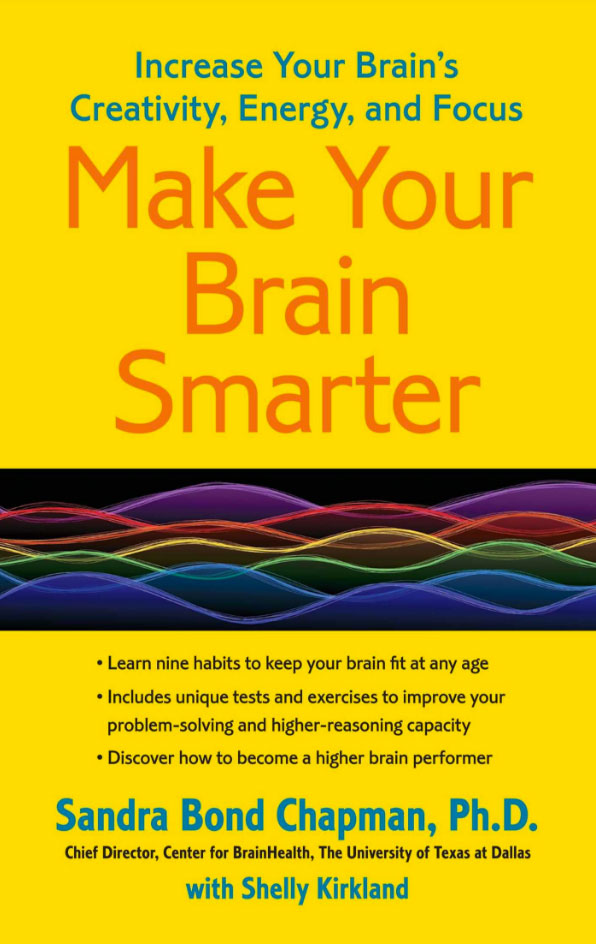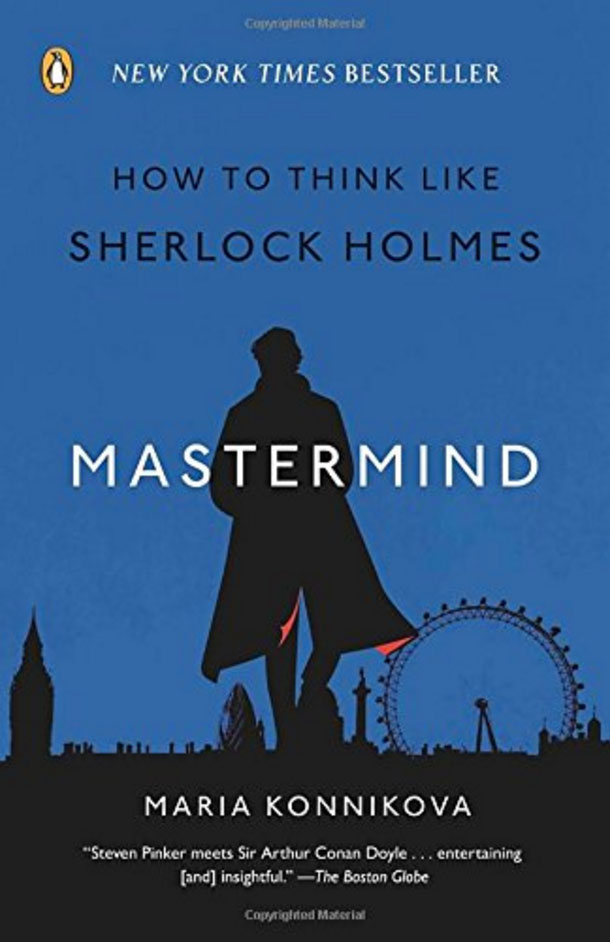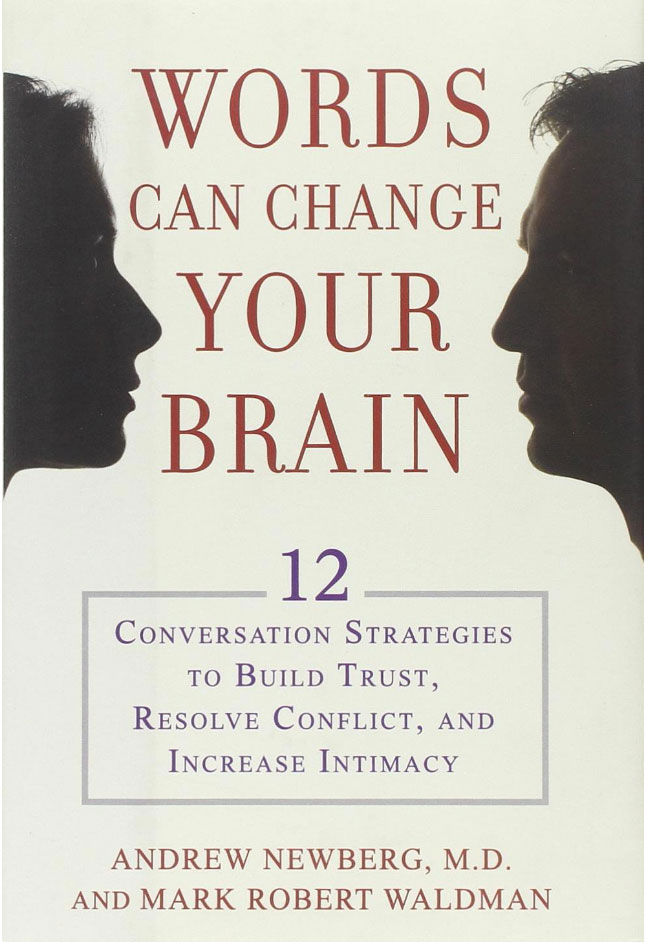The Do-It-Yourself Brain Makeover
Make Your Brain Smarter: Increase Your Brain’s Creativity, Energy, and Focus
Sandra Bond Chapman. 2013. Simon & Schuster, Free Press, New York. 304 pages.
Mastermind: How to Think Like Sherlock Holmes
Maria Konnikova. 2013. Penguin Group, Viking Press, New York. 288 pages.
Words Can Change Your Brain: 12 Conversation Strategies to Build Trust, Resolve Conflict, and Increase Intimacy
Andrew Newberg and Mark Robert Waldman. 2012. Penguin Group, Hudson Street Press, New York. 272 pages.
As early as the 18th century, renegade scientists occasionally challenged the prevailing belief that the human brain was unchangeable after childhood. But it wasn’t until the invention of functional magnetic resonance imaging (fMRI) in the 1990s that neuroscientists at last had the tools they needed to convince the mainstream that changeability, or plasticity, is an enduring characteristic of the brain. Even then, many scientists preferred to approach the subject with caution, reluctant to stray beyond the findings of research to wonder just how malleable the human brain might be and what that might imply. As the research has accumulated, however, more scientists have begun to join the ranks of those who hope to help people transform themselves by transforming their minds.
In the past year alone, several notable books offered up the latest findings in the form of do-it-yourself instructions for building the best brain ever. If the 1990s could be called the Decade of the Brain, the 2010s may be the Decade of the Brain Makeover.
One of the most recent examples, and perhaps one of the most compelling, is Sandra Bond Chapman’s Make Your Brain Smarter: Increase Your Brain’s Creativity, Energy, and Focus. Chapman is a cognitive neuroscientist and founder and chief director of the Center for BrainHealth at the University of Texas at Dallas. Brain health is really the point of the book, not exercising the brain just to be smart. Chapman contends that we can’t afford to go on as we are; it would be bad “brainomics” for each of us as well as for society. “Our life span only continues to grow as the twenty-first century proceeds,” she points out, and who would want the body to outlive the brain? Unfortunately, she says, “the steps to improve cognitive brain function are at least a generation and a half behind what has been achieved for heart health. Significantly more needs to be done to achieve a brain health span that more closely aligns with our body’s new life span.”
Chapman’s research convinces her that for most of us, cognitive brain health declines because we let it. Unfortunately, she says, it often takes 20 to 40 years—and sometimes more—for research discoveries to “trickle down” to popular awareness and practice. Her book is intended to shortcut the process so that we won’t delay, “not even for a day,” the important work of harnessing the potential of our “most valued internal asset” by exercising it.
How do we do this? If you’re thinking Sudoku puzzles or feats of rote memorization, think again. In fact, Chapman insists that “rote behavior is rotting our brain potential.” Robotically learning facts verbatim is not the pathway to increase our brain’s connections, she says. Nor is our current passion for multitasking, which she calls “toxic to your brain and your health.” Rather, Chapman’s research (and that of other researchers) compels her to advocate for exercising three core frontal-lobe skills: strategic attention, integrated reasoning, and mental flexibility, or innovation.
The first of these, strategic attention, involves gatekeeping. In this information-rich world, it’s counterproductive to carelessly take in every new piece of information we happen to stumble upon, or to juggle too many tasks at once. To develop our frontal lobe, we need to learn how to concentrate on one task at a time, says Chapman. At most we should pick two “elephants,” or larger tasks, for our to-do list each day. We should toggle between them to occasionally refresh our mind, and perhaps chase a few “rabbits,” or smaller tasks, if a break is called for. Above all, occasionally we need to allow for rest time, which is when the brain does its most effective dot-connecting, a necessary foundation for the next core skill: integrated reasoning, which is the opposite of rote thinking. Essentially, it involves transforming new information by synthesizing it, connecting it to existing experience and knowledge, and using it to construct new and novel interpretations. This, in turn, lays the groundwork for the third core frontal-lobe skill: innovation. We practice this skill when we broaden our perspectives, learn from our mistakes, and become curious about the infinite ways to connect ideas or solve problems.
“To build a healthy brain, you must stop your brain from drinking from a fire hose that is spewing vast amounts of information.”
If we habitually exercise these three core frontal-lobe skills, writes Chapman, there is no limit to how late in life our brain can strengthen and grow in its capabilities, and she offers hope even for those with a brain injury or dementias. “The brain can be repaired years after the injury given proper levels of brain training,” writes Chapman, and although there is no cure yet for Alzheimer’s, she advocates working to “stave off” its effects.
Chapman has found that each generation faces unique challenges to brain health, which she puts down to differences in educational and workplace environments, as well as in technology. But all age groups harbor some of the same harmful misconceptions about the brain, including the belief that levels of “smart” are inborn and unchangeable, that IQ is a meaningful measurement of “smart,” and that speed and memory are the most important indications of brain performance. The truth, she says, is that the way we habitually think changes our brain. “Which type of brain are you building?” she asks. “A strategic or nonstrategic brain?” She then offers this intriguing comment: “I am reminded of how Sherlock Holmes describes himself to Watson in A Study in Scarlet.”
It’s Elementary
Chapman is in good company. Psychology writer Maria Konnikova was reminded of exactly the same thing. The same month Chapman’s book came out (January 2013), Konnikova’s own DIY brain makeover book hit bookshelves—this one titled Mastermind: How to Think Like Sherlock Holmes. Drawing on similar research from neuroscience and psychology, Konnikova presents Holmes as “an ideal model for how we can think better.”
Like Chapman, she is struck by Holmes’s self-description in A Study in Scarlet. “You see,” Holmes tells his sidekick, John H. Watson, “I consider that a man’s brain originally is like a little empty attic, and you have to stock it with such furniture as you choose. A fool takes in all the lumber of every sort that he comes across, so that the knowledge which might be useful to him gets crowded out. . . . Now the skilful workman is very careful indeed as to what he takes into his brain-attic. . . . Depend upon it there comes a time when for every addition of knowledge you forget something that you knew before. It is of the highest importance, therefore, not to have useless facts elbowing out the useful ones.”
As Konnikova observes, memory research proves this metaphor to be “remarkably accurate.” Unfortunately, Watson never seems quite up to the task of applying Holmes’s admonition to become a gatekeeper of information, but this may be just as well for Konnikova; his character supplies her with an equally elegant metaphor for explaining to her readers how the human brain typically works. We each have a “Holmes” and a “Watson” in residence, she says, and both have useful roles. But our thinking skills and brain health depend on which character we allow to habitually run the household.
Indeed, we now understand that the human mind is built to run on two tracks—one fast, the other slow (see “Your Brain on Self-Deception”). The first is intuitive and reactionary, powered by our fight-or-flight emotional response network, which, as Konnikova points out, “doesn’t require much conscious thought or effort.” The second is more deliberate, reflective and mindful. It depends on the prefrontal cortex and therefore engages more brain resources.
Because of the mental effort required by System Holmes, as Konnikova renames System 2, we spend most of our time in Watson mode: running on automatic. But as Chapman and other researchers have discovered, we can (and should) increase our use of System Holmes.
“So poorly trained are we at actually taking someone else’s point of view that when we are explicitly requested to do so, we still proceed from an egocentric place.”
Although Konnikova doesn’t outline a precise method for doing this, the tips she extracts from Holmes and Watson jibe well with Chapman’s brain-training program. For instance, the core frontal-lobe skill of strategic attention is evident in the example Konnikova offers from “The Adventure of the Bruce-Partington Plans.” In this story, Watson describes Holmes as having the “remarkable” characteristic of knowing when to step back from the problem at hand. “For my own part,” Watson confesses, “I had none of this power of detachment.” Echoing Chapman’s endorsement of this skill, Konnikova explains the research: “Psychological distance may be one of the single most important steps you can take to improve thinking and decision making,” she writes. “The closer we remain to our egocentric view, the smaller and more limited the picture that confronts us. . . . In essence, psychological distance accomplishes one major thing: it engages System Holmes. It forces quiet reflection.”
What’s going on in the brain during this reflection? “Holmes’s mental journeying goes by many names,” says Konnikova, “but most commonly it is called meditation.” Like most psychologists, Konnikova is referring to a secular form of mental exercise that clears the mind of distracting roadblocks to mindful thought. She points to a large body of research performed by Richard J. Davidson and others at the University of Wisconsin demonstrating the value of meditation for integrating the brain and creating positive emotional states, which is often linked to innovation and creativity, another core frontal-lobe skill described by Chapman.
Interestingly, another proven benefit of meditation is an increase in compassion and attunement to others. Neither Chapman nor Konnikova dwells on these aspects of brain health, but they may be much more relevant to an optimal brain makeover than most imagine. In fact, just after these two DIY books were released, researchers from the University of Illinois announced the results of a study mapping emotional intelligence. Their surprising finding was that the distinctions we make between social, emotional and general intelligence may be artificial; there is actually significant overlap between general intelligence and emotional intelligence in the brain. “Intelligence, to a large extent, does depend on basic cognitive abilities, like attention and perception and memory and language,” said Aron Barbey, the lead researcher. “But it also depends on interacting with other people.”
Remodeling Through Communication
Another DIY brain makeover book applies the findings of neuroscience and principles of mindfulness to communication. Andrew Newberg of Jefferson Medical College in Pennsylvania and Mark Robert Waldman of Loyola Marymount University in Los Angeles collaborated on Words Can Change Your Brain: Conversation Strategies to Build Trust, Resolve Conflict, and Increase Intimacy. With emphasis on examining our deepest values, the authors explain the importance of sculpting the brain by consciously “meditating” on positive words and favoring them over negative words in conversation.
Like Chapman, Newberg and Waldman offer a concrete remodeling strategy, which they call “Compassionate Communication.” Their 12-part strategy is meant to teach skills for overcoming the kind of self-talk that leads to anxiety and other negative emotions and for communicating with others in ways that will promote positive personal as well as professional relationships.
In a nutshell, the 12 components are 1) relax, 2) stay present, 3) cultivate inner silence, 4) increase positivity, 5) reflect on your deepest values, 6) access a pleasant memory (which will promote a receptive facial expression), 7) observe nonverbal cues, 8) express appreciation, 9) speak warmly, 10) speak slowly, 11) speak briefly, and 12) listen deeply (these last two are perhaps the most universal communication challenges).
“By responding only to what the other person just said, both speaker and listener learn how to stay focused on the present moment, and this allows a stronger interpersonal connection to be established.”
Many of their strategies complement those offered by Chapman and Konnikova—the importance of stress reduction and time for reflection, for instance—but they are directed outward as well as inward, certainly a positive boost for all of society in terms of Chapman’s “brainomics.” When you engage in “compassionate communication,” say Newberg and Waldman, “something quite surprising occurs: both of your brains begin to align themselves with each other. This special bond is a phenomenon referred to as ‘neural resonance,’ and in this enhanced state of mutual attunement two people can accomplish remarkable things together. Why? Because it eliminates the natural defensiveness that normally exists when people casually converse.”
It also makes for happier workplaces, happier intimate relationships, happier children. In fact, say the authors, the earlier we teach our children to resolve conflicts using positivity and optimism, the easier parenting becomes in general: “And because positive language and speech is contagious, we owe it to future generations to practice kindness whenever we interact with others.”
Maybe we do owe it to future generations to take on this as well as a few other DIY brain projects, if not for the sake of our individual brain, perhaps for the sake of the social neural network. On the other hand, some may have cultivated their own general intelligence while neglecting social development. The stereotype of the genius loner? Not so accurate, it seems. It’s possible to score high on traditional measurements of IQ and still be asocial, but as Chapman and others point out, IQ measures rather superficial aspects of intelligence. True intelligence—the smart brain of the future—requires the ability to make connections, not only between concepts but between people.



